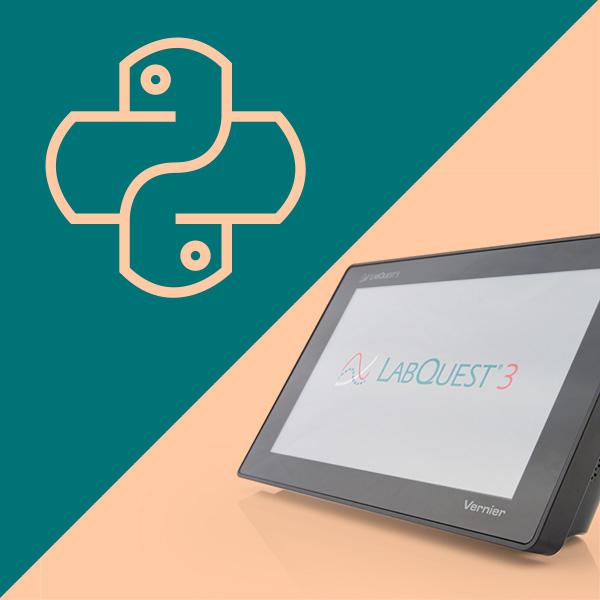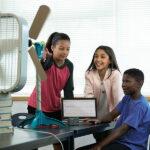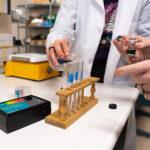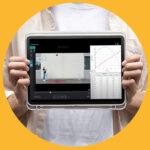
Sharing ideas and inspiration for engagement, inclusion, and excellence in STEM

When you think about ways to teach science, coding might not be the first thing that comes to mind.
However, whether you teach first graders or college undergraduates, incorporating coding into your STEM classes can help your students address questions and explore scientific principles they couldn’t otherwise.
For example, coding can elevate a physics lesson on projectile motion; you or your students can write a code that eliminates the advanced math required to add air resistance to a projectile’s flight.
And when you combine Python (a popular coding language) and Vernier sensors, you give your students the opportunity to code beyond the screen by integrating sensor data collection into coursework.
Put another way, students can use Python to interact with sensor data they have collected in their environment, emphasizing real-world applications of coding.
A New Way to Unleash the Power of Python and Vernier Technology
Vernier now offers Python support for our LabQuest family of sensors and interfaces. Simply stated, we have written a library (that is, a body of code) educators and students can use in Python that connects to our LabQuest devices.
This means you and your students can communicate in Python to LabQuest sensors that are connected to a LabQuest interface—combining a powerful data-acquisition device and sensor input with Python.
This guide shows you how to get started with writing Python programs for LabQuest. The guide is geared toward individuals who are new to Python and individuals who are familiar with the coding language.
One of the main benefits of our new Python support for LabQuest is that students can combine Vernier sensor data with other Python libraries, allowing for analysis or output.
For instance, students can write a code that essentially says, “Based on the LabQuest sensor reading, if the temperature goes above a certain level, turn on a fan.”
More benefits of our Python support for LabQuest include
- Students can learn coding with real-world data in a more interesting, hands-on way.
- Students can create their own data-collection tool that is tailored to their particular needs.
- Students can create engineering projects that combine LabQuest sensor data with other Python-supported hardware and/or software.
Additional Advantages of Coding
Coding helps give students a different perspective on science principles, and it is a great tool for problem-solving. For example, when coding, students must clearly define the problem they want to solve—which, in turn, helps them clearly define the optimal solution.
Further, the kinds of problems that people want to tackle with coding (i.e., authentic, interesting, big problems) require more than one person. In that way, coding is also a great tool for collaboration.
And going forward, even students who do not pursue STEM-specific careers will likely have a job that somehow touches coding. In that way, from a societal standpoint, it’s helpful for everyone to understand what coding is and what it does or doesn’t do.
For more ideas on how to incorporate coding into STEM classes, check out this article from Edutopia.
Share this Article

Sign up for our newsletter
Stay in the loop! Beyond Measure delivers monthly updates on the latest news, ideas, and STEM resources from Vernier.






